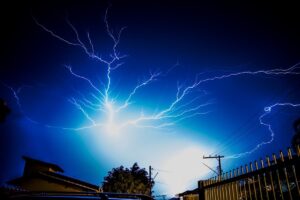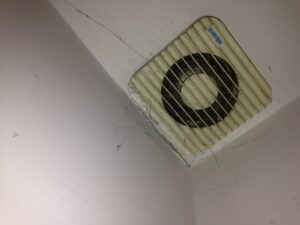Greetings, homeowners and fellow electrical service industry enthusiasts! As your friendly neighborhood electrical experts, we are here to shed light on a common issue that might be sending shivers down your spine: cold air seeping through electrical outlets.
Don’t worry, though; understanding why this happens and how to prevent it is a breeze.
In this blog, we will explore the reasons behind this chilly situation, its likely occurrence within buildings, the impact on your energy bills, and, most importantly, the simple solutions at your fingertips.
Cold Air Through Electrical Outlets: Why Does it Happen?
The culprit behind cold air venturing through electrical outlets is usually poor insulation or improper sealing. Electrical outlets and switches are openings in your walls, allowing air from the exterior to infiltrate your cozy living spaces.
The small gaps around the outlets and wiring, created during installation or through wear and tear over time, create pathways for cold air to sneak in. If left unaddressed, this can lead to uncomfortable drafts and increased energy consumption.
Where Is It Most Likely To Occur?
Cold air invasion is more prevalent in exterior walls than interior ones. The reason is simple: Exterior walls face the elements, making them more susceptible to temperature fluctuations.
Rooms located in corners of the building, especially those facing the prevailing winds, are more prone to this chilly phenomenon, too.
The Impact on Energy Bills: Is It a Culprit?
Absolutely! Cold air seeping through electrical outlets can cause your heating bills to climb higher than you’d like. The constant influx of cold air makes your heating system work harder to maintain a comfortable temperature, wasting energy in the process. It’s like trying to warm up a room with a window wide open. Not very efficient, right?
Prevention and Solutions: Seal the Deal!
Thankfully, keeping the cold at bay is not a daunting task. There are several simple solutions to this issue, and you can choose the one that suits your preferences and expertise.
Outlet Socket Sealers: These nifty products are readily available in most hardware stores (both small shops and big box stores), as well as online. They are inexpensive and easy to install.
Outlet socket sealers fit behind the outlet cover and help seal the gaps around the receptacle, preventing cold air infiltration effectively.
Anyone with basic DIY skills can handle this fix. In fact, even if you’ve never done any DIY work, you can probably still manage to install these sealers.
Weatherstripping and Caulking: For a more comprehensive approach, consider using weatherstripping and caulking to seal any gaps and cracks around the outlets and switches. Weatherstripping tape applied around the outlet edges and caulk applied in larger gaps will provide an airtight seal.
Insulation Upgrade: For a long-term solution, consider upgrading your wall insulation. Proper insulation minimizes the temperature transfer between the exterior and interior of your walls, making your home more energy efficient and comfortable. This is best done by professional insulation contractors.
Do I Need an Electrician?
Fear not! You do not need to be an electrical expert, nor do you necessarily need to hire one for this particular issue. Outlet socket sealers and weatherstripping are homeowner-friendly solutions that you may be able to confidently handle. However, if you decide to upgrade your wall insulation, it’s advisable to consult a professional insulation expert for the best results.
No one wants to feel icy gusts through their electrical outlets. It can be quite disconcerting. Now that you understand why this happens and how to prevent it, you can take action and enjoy a cozier and energy-efficient home.
Whether you choose outlet socket sealers or opt for a more comprehensive insulation upgrade, taking care of these small gaps will make a world of difference in keeping your home warm and your heating bills in check.
Stay snug, my friends. And remember, a well-sealed home is a happy home!
Let the electrical experts at Prairie Electric know if you have any questions.


